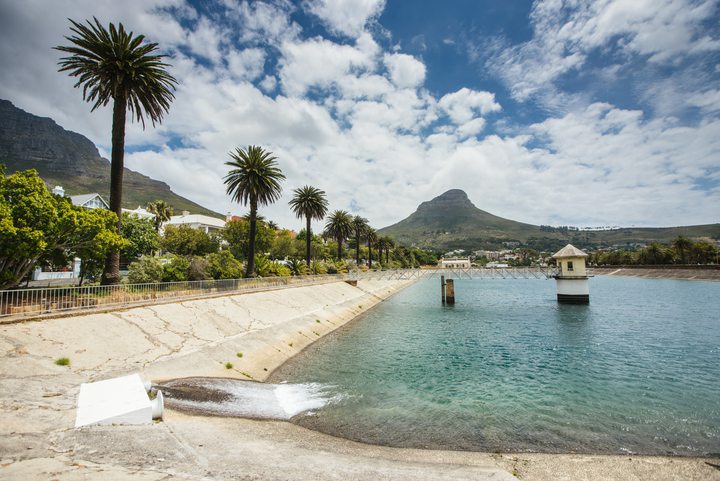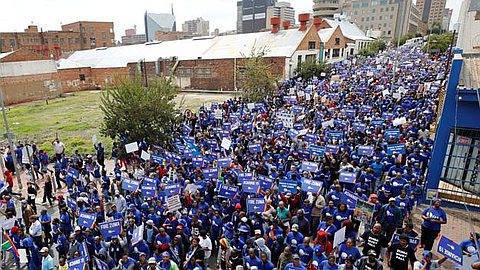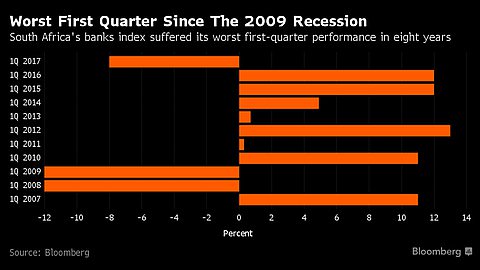Cape Town Water Crisis Eases as Residents Curb Consumption

Molteno reservoir in Cape Town, South Africa
The authorities in South Africa’s second-biggest city said earlier this week that they expected “Day Zero” -- when taps would be turned off to residential suburbs -- would be reached on April 16 unless daily usage was reduced by 20 percent to 450 million liters (119 million gallons). The city’s 4 million residents have been limited to using 50 liters of water each a day as of Thursday, down from a previous allocation of 87 liters.
“Indications are that Day Zero will be pushed out, even quite substantially far out, due to the residents of Cape Town reducing water demand drastically,” Mmusi Maimane, the leader of the Democratic Alliance, the main opposition party which controls the city and surrounding Western Cape province, said by phone on Friday. “We will make an announcement next week on just how far out it will be.”
25 Liters
South Africa’s biggest tourist destination is in the midst of the worst drought on record after three years of poor rains. The six main dams that supply the city are currently on average 25.8 percent full, down from 38.4 percent a year ago and 85 percent in 2014. Most taps will be switched off if levels drop to 15 percent, and residents will be forced to collect a daily allocation of 25 liters at 200 allocated points.
Water shortages remain acute and usage restrictions will stay in place, Maimane said.
A directive issued to farmers by the national water department to stop drawing from dams because they had exceeded their allocation for the year through October will help alleviate demand pressures. Agriculture accounted for 39 percent of total water usage last week, the city’s latest data shows.
“The fact that water supply to agriculture has stopped does lessen the pressure on the rest of the network, but that does not automatically mean that all the water originally meant for agriculture will go to other consumers,” Sputnik Ratau, a spokesman for the department, said by phone. “A lot of that water is already in the system, and there are leaks and other factors that contribute to water loss. We need to keep overall consumption down for at least another two-and-a-half months or until the winter rains start.”





